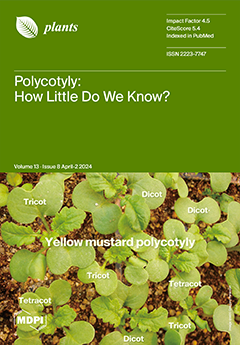Field studies with the large-stemmed plant
Artemisia dubia (
A. dubia) have been carried out at the Vėžaičiai Branch of LAMMC since 2018. According to three years of experimental results, annual dry matter (DM) yield varied from 7.94 to 10.14 t ha
−1. Growing conditions, nitrogen application level, and harvesting time had statistically significant impacts on
A. dubia productivity. The most important tasks of this article were to investigate and determine the factors influencing
A. dubia plant biomass productivity and the evaluation of technological, power, and environmental parameters of plant biomass utilization for energy conversion and the production of high-quality solid biofuel pellets. For the experiments, six variants of
A. dubia samples were used, which were grown in 2021. Plants were cut three times and two fertilization options were used: (1) no fertilization and (2) fertilization with 180 kg ha
−1 of nitrogen fertilizer. These harvested plants were chopped, milled, and pressed into pellets. The physical–mechanical characteristics (moisture content, density, and strength) of the
A. dubia pellets were investigated. During this study, it was found that the density in the dry mass (DM) of the pellets ranged from 1119.86 to 1192.44 kg m
−3. The pellet moisture content ranged from 8.80 to 10.49%. After testing pellet strength, it was found that the pellets which were made from plant biomass PK-1-1 (first harvest without N fertilization) were the most resistant to compression, and they withstood 560.36 N of pressure. The dry fuel lower heating value (LHV) of the pellets was sufficiently high and was very close to that of the pine sawdust pellets; it varied from 17.46 ± 0.25 MJ kg
−1 to 18.14 ± 0.28 MJ kg
−1. The ash content of the burned pellets ranged from 3.62 ± 0.02% to 6.47 ± 0.09%. Emissions of harmful pollutants—CO
2, CO, NO
x, and unburnt hydrocarbons (C
xH
y)—did not exceed the maximum permissible levels. Summarizing the results for the investigated properties of the combustion and emissions of the
A. dubia pellets, it can be concluded that this biofuel can be used for the production of pressed biofuel, and it is characterized by sufficiently high quality, efficient combustion, and permissible emissions to the environment.
Full article






